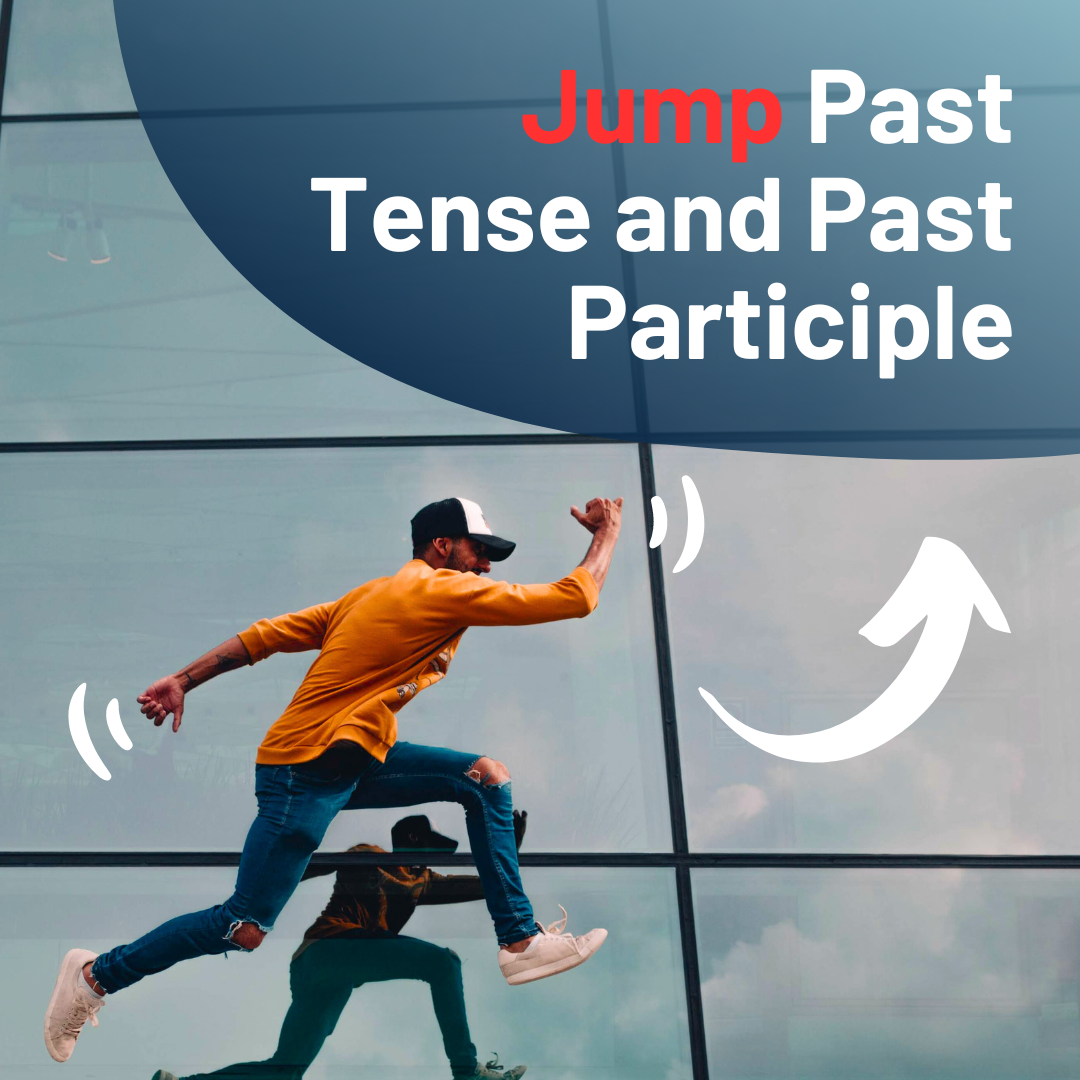The act of jumping, a seemingly simple action, can take on various tenses, propelling us through the narrative of time. But have you ever wondered what the past forms of “jump” are and how they dance across past tense and past participles? Buckle up, language enthusiasts, for we’re about to delve into the captivating world of verb conjugation!
Jump Past Tense or Past Participle? – A Crucial Distinction:
Before we delve into the forms, let’s clear a crucial distinction. “Past tense” describes an action completed in the past, like “She jumped over the fence yesterday.” In contrast, the “past participle” forms part of verb phrases like “He has jumped rope every day this week.”
Past Form of Jump:
Past Form: The straightforward past form of “jump” is simply “jumped.” We use it to describe an action completed at a specific point in the past:
- The children jumped for joy when they won the game.
- She jumped out of bed the moment she heard the news.
- They jumped in line to get the limited edition sneakers.
Past Participle of Jump:
The past participle of “jump” can be either “jumped” or “jumpen.” Both are grammatically correct, although “jumped” is more common in modern English:
- She has jumped rope every morning for a month. (present perfect)
- The fence has been jumped several times. (present perfect passive)
- The children, jumpen with excitement, raced towards the playground. (past participle as an adjective)
Jump V1 V2 V3: Demystifying Verb Conjugation:
In grammar, verbs like “jump” are categorized as irregular verbs, meaning they don’t follow the standard pattern of adding “-ed” to form the past tense and past participle. Instead, they have their own unique set of forms:
- V1 (present tense): jump
- V2 (past tense): jumped
- V3 (past participle): jumped/jumpen
Understanding this V1-V2-V3 sequence is crucial for using verb tenses and participles correctly.
Beyond the Basics:
The past forms of “jump” can be used in various grammatical constructions, adding nuance and complexity to your writing and speech. For example:
- Present Perfect: “I have never jumped off a cliff before.” (emphasizes personal experience)
- Present Perfect Continuous: “They have been jumping rope for an hour.” (highlights the ongoing action)
- Passive Voice: “The gate was jumped over by the dog.” (focuses on the action, not the doer)
Remember, the choice between “jumped” and “jumpen” for the past participle depends on context and personal preference. Both forms are acceptable, but “jumped” is generally preferred in formal writing.
Jump Third Form:
The third form of “jump” can be either jumped or jumpen. Both are grammatically correct, but they have slightly different uses:
- Jumped is the most common form and is used as the past participle in most situations. This is the form you would use for sentences like:
- “I have jumped rope every day this week.” (present perfect)
- “The gate was jumped over by the dog.” (passive voice)
- Jumpen is less common but is still acceptable in informal contexts, especially when used as an adjective.For example:
- “The jumpen children raced towards the playground.”
- “I felt a jumpen sensation in my stomach when I saw the roller coaster.”
Overall, jumped is the safer and more widely accepted choice for the third form of “jump” in formal writing and most spoken contexts. However, jumpen can be used for a more informal or descriptive tone.
Conclusion:
Jumping through the past forms of “jump” can be a delightful linguistic adventure. By understanding the nuances of past tense and past participle, you can add depth and precision to your communication, ensuring your words land with perfect grace, just like a well-executed jump.
So next time you find yourself writing or speaking about a past leap, take a moment to choose the right form of “jump.” It’s a small step that can elevate your language to new heights!
FAQs
1. How do I use “jump” in different verb tenses?
Ans– Here are some examples of how to use “jump” in different verb tenses:
- Present: I jump, you jump, he/she/it jumps, we jump, they jump
- Past: I jumped, you jumped, he/she/it jumped, we jumped, they jumped
- Present Perfect: I have jumped, you have jumped, he/she/it has jumped, we have jumped, they have jumped
- Past Perfect: I had jumped, you had jumped, he/she/it had jumped, we had jumped, they had jumped
- Future: I will jump, you will jump, he/she/it will jump, we will jump, they will jump
2. What’s the difference between Jump past tense and past participle?
Ans– Past tense describes an action completed in the past, like “She jumped over the fence yesterday.” The past participle is used in verb phrases, like “He has jumped rope every day this week.”
